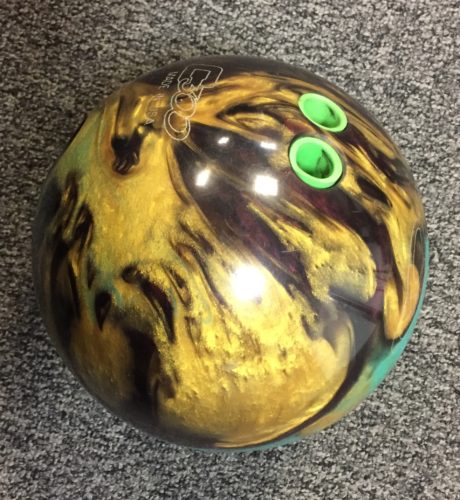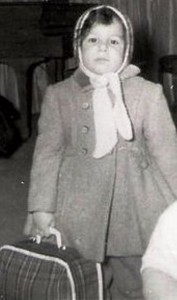Want to avoid the TSA tangle? Just ask.

Our column this week for CNBC tackled the TSA experience and offered tips on what you may – and may not – pack in your carry-on. Here’s the story.
Last week, the Transportation Security Administration shared a photo on social media of a missile launcher found in a passenger’s checked bag.
“Man said he was bringing it back from Kuwait as a souvenir,” said TSA spokeswoman Lisa Farbstein on Twitter, “Perhaps he should have picked up a keychain instead!”
As a division of the Department of Homeland Security, TSA is responsible for overseeing security at the nation’s airports. But weighing in on the pros and cons of travel souvenirs and answering questions about what items are permitted on airplanes has become part of the job.
“We get a lot of questions about what people can take through the checkpoints,” said Janis Burl, the @AskTSA manager. “A lot are about food – i.e. ‘Can I take a sandwich?’ [Answer: yes] And over the past few months we’ve gotten a lot of questions about that’s kid toy slime.” [Also yes, but only if the slime is 3.4 ounces or less and is carried with a travelers’ liquids and lotions in the allowed one-quart zip bag.]
On its website – under the header “What Can I Bring?”, and on its app, TSA has an extensive catalog of things travelers may or may not pack in their carry-on or checked bags. Items are listed alphabetically and by category and the list can be searched.
Under “Toys” there are seven examples and TSA notes that while fidget spinners and remote controlled cars are allowed in carry-on luggage, realistic replicas of firearms and explosives are not. The TSA directory also has a helpful note about adult toys (ahem), which are allowed in both carry-on and check bags.
What about toy lightsabers, including those purchased or custom built (to the tune of $200) at Disney’s new Star Wars: Galaxy’s Edge attraction?
TSA’s “What Can I Bring?” database says “Sadly the technology doesn’t currently exist to create a real lightsaber. However, you can pack a toy lightsaber in your carry-on or checked bag,” and adds, “May the force be with you.”
With summer travel in full-swing, it’s good to know ahead of time that tent spikes or poles, strike anywhere matches, spear guns, pool cues, Magic 8 Balls, firecrackers, bear spray, baseball bats and bowling pins are not allowed as carry-on items, but that bowling balls are allowed.
Also allowed as carry-on: compasses, amethyst crystals, fresh fruit, fishing rods, live lobsters (in a clear, plastic, spill proof container), seashells, fruit gummies, cooked lasagna, jelly beans, electronic bathroom scales and frozen water bottles, as long as the water is completely frozen when presented for screening.
And while the Federal Aviation Administration is emphatic that drones not be flown near airports, TSA allows drones in carry-on bags. However, the agency encourages travelers to check with their airline about specific rules for taking drones on board.
For items not found in TSA’s database, and for travelers who want to make sure a specific item will fly, there is a team of ten full-time TSA employees who monitor and respond to questions sent in via Twitter (@AskTSA) and Facebook Messenger.
Team members are on duty 8 a.m. to 10 p.m. (ET) weekdays, 9 a.m. to 7 p.m. weekends and holidays, (including Christmas) and are quick to respond to all manner of “Can I bring?” questions sent in.
One passenger recently asked about traveling with jars of pickles. They were advised that pickles without liquid in a zip bag were good to go as carry-on, but that pickles with pickle juice were only allowed in a carry-on bag if packed in a container of 3.4 oz. or less.
Another passenger wrote to @AskTSA inquiring about traveling with a whole cantaloupe she’d grown in her garden.
“I want to take it to my mom,” the traveler tweeted to TSA. “You can,” TSA responded, adding “We hope your mom enjoys the treat!”
Other recent questions have covered verything from quesadillas to roach bait. And Burl says, when in doubt, sending along a photo is always helpful.
It may seem as if the “AskTSA” team has likely seen it all by now, but Burl says they sometimes gets stumped.
“If you send in a photo and we don’t know what it is, we’ll go to Google to figure it out.”
And while the @AskTSA team uses its knowledge, TSA’s database and, sometimes, a bit of Googling, to give travelers a thumbs up or down on traveling with certain items in carry-on or checked bags, Burl says the final say-so on any whether an items is a ‘go’ rests with the Transportation Security Officer (TSO) on duty at the checkpoint.
“If they’re looking at something that doesn’t look right, they can make that decision,” said Burl.
In addition to its website, Twitter and Facebook accounts, TSA also has a very popular and informative Instagram account that can help travelers learn about what can fly.
A recent post, in honor of National Kitten Day, for example, noted that kittens, catnip and balls of yarn are good to go through security checkpoints, but warned that cats (and other pets) must be removed from their carrier while the carrier goes on the X-ray belt for screening.⠀⠀⠀⠀⠀⠀⠀⠀⠀⠀⠀⠀⠀⠀⠀⠀
TSA also produces occasional quirky-but-entertaining and educational “They brought what? videos.




